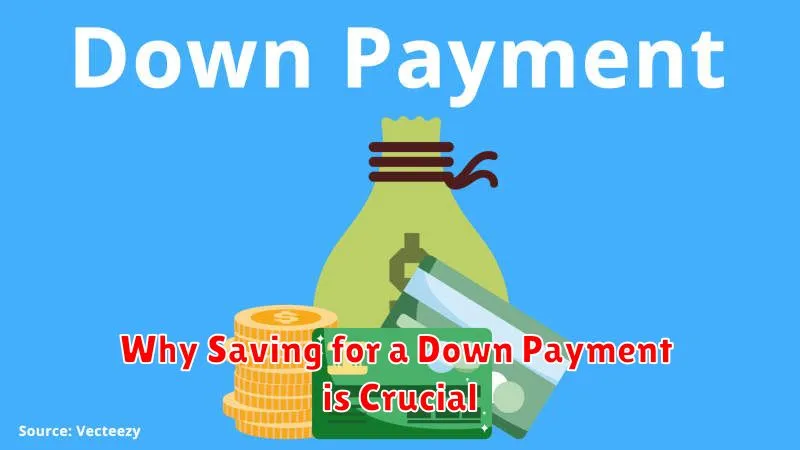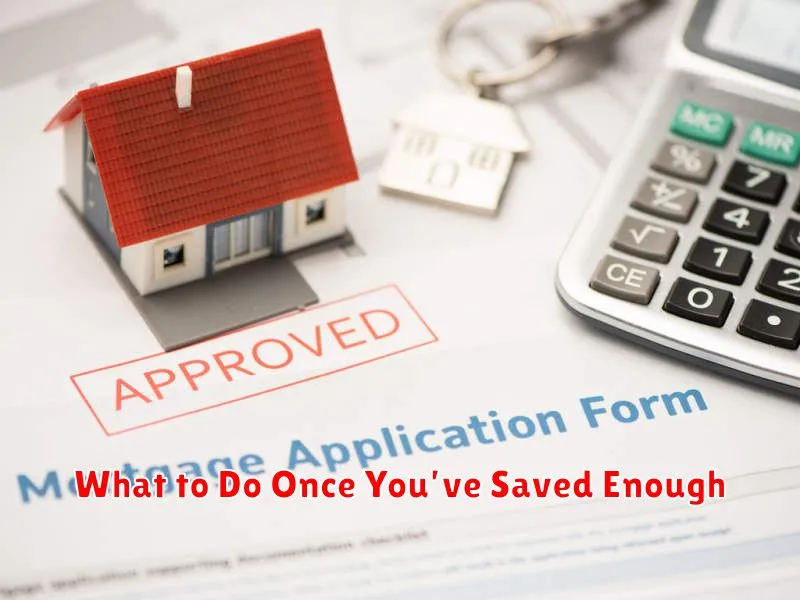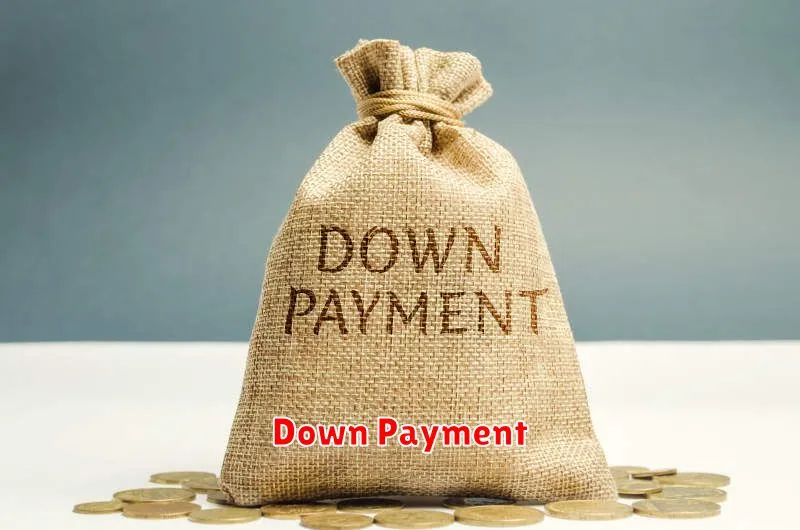Buying your first home can feel like a distant dream, especially when faced with the often daunting task of saving for a down payment. It’s easy to get caught up in the excitement of browsing properties and envisioning your future, but the reality of coming up with a significant sum of money can quickly set in. The good news is, achieving the dream of homeownership is entirely possible with a strategic and realistic plan.
This comprehensive guide will walk you through the essential steps to saving for a down payment on your first home. We’ll explore practical tips and tricks to budget effectively, identify areas for saving, and ultimately help you reach your financial goal of owning your own piece of the world.
Understanding the Costs of Buying a Home
Buying a home involves more than just the down payment. It’s crucial to understand all the costs involved to budget effectively. Beyond the down payment, which is a percentage of the home’s price paid upfront, you’ll need to account for closing costs. These are expenses associated with finalizing the mortgage and transferring ownership, and can range from 2-5% of the loan amount.
Additional costs include property taxes, which are annual taxes levied on property owners, and homeowner’s insurance, which protects you from financial losses due to damage or disasters. Don’t forget about potential moving expenses and the need for an emergency fund to cover unexpected repairs or maintenance after you move in.
Why Saving for a Down Payment is Crucial

Saving for a down payment is often considered the biggest hurdle to homeownership, but it’s a crucial step for several reasons. Firstly, a larger down payment translates to a smaller loan amount, which ultimately means lower monthly mortgage payments. This can significantly impact your monthly budget, freeing up funds for other expenses or savings goals.
Secondly, a substantial down payment can help you secure a lower interest rate on your mortgage. Lenders view borrowers with larger down payments as less risky, rewarding them with more favorable loan terms. Over the life of your loan, this can result in thousands of dollars in savings.
Finally, having a significant down payment can increase your buying power and give you a competitive edge in a hot market. Sellers often favor buyers with larger down payments, as it signals financial stability and a higher likelihood of loan approval.
How Much Should You Save for a Down Payment?
The down payment is a significant chunk of cash you pay upfront when buying a home. Traditionally, a 20% down payment has been the norm, but that doesn’t mean you’re stuck with that figure.
How much you need to save depends on several factors:
- Home Price: A higher purchase price means a larger down payment, even with the same percentage.
- Loan Type: Different mortgages have varying down payment requirements. Some loans allow as low as 3% down, while others may require more.
- Credit Score: A good credit score can open doors to lower down payment options.
- Financial Goals: Consider how much you’re comfortable putting down and its impact on your monthly budget and other savings goals.
While a 20% down payment can help you avoid private mortgage insurance (PMI) and secure lower interest rates, it’s not always feasible. Explore different mortgage options, research first-time homebuyer programs, and crunch the numbers to determine a realistic and manageable down payment goal for your situation.
Strategies to Save Money Quickly
Saving for a down payment on your first home can feel like a daunting task, but it’s absolutely achievable with the right approach. Here are a few strategies to help you save money quickly:
1. Create a Budget and Stick to It: This might seem obvious, but it’s crucial. Track your income and expenses to identify areas where you can cut back. Utilize budgeting apps or spreadsheets to simplify this process.
2. Cut Down on Non-Essential Spending: Take a hard look at your spending habits. Do you really need that daily latte or subscription box? Temporarily reducing or eliminating non-essential expenses can free up a significant amount of money.
3. Explore Side Hustle Opportunities: Increase your income by taking on a side hustle. This could be anything from freelance work to driving for a ride-sharing service. Even a few extra hours a week can make a difference.
4. Automate Your Savings: Set up automatic transfers from your checking account to your savings account each month. This “pay yourself first” strategy ensures consistent saving without much effort.
5. Negotiate Lower Bills: Don’t be afraid to negotiate with service providers for lower rates on things like internet, phone, and insurance. You might be surprised at how much you can save.
6. Downsize and Declutter: Selling unused items online or through consignment shops can generate extra cash. Plus, minimizing your belongings can help you realize you need less in the long run.
The Role of Budgeting in Reaching Your Goal
Saving for a down payment on your first home can feel like a daunting task, but creating and sticking to a budget can be the key to achieving your goal. Budgeting provides a clear picture of your income and expenses, allowing you to identify areas where you can potentially save more effectively.
By tracking your spending, you gain valuable insights into your financial habits. You might be surprised to discover how much you spend on non-essential items. This awareness empowers you to make informed decisions about your spending habits and redirect funds towards your down payment savings.
A well-structured budget serves as a roadmap, guiding you toward your financial goals. It helps you stay focused, motivated, and disciplined throughout your savings journey, making the dream of homeownership a tangible reality.
Government Programs That Can Help with Your Down Payment
Saving for a down payment is often the biggest hurdle for first-time homebuyers. Luckily, there are government-backed programs designed to help. These programs can provide down payment assistance, often in the form of grants or low-interest loans.
Federal Housing Administration (FHA) loans are popular for their low down payment requirement (as low as 3.5%). VA loans, available to eligible veterans and surviving spouses, may even allow for a $0 down payment.
Beyond federal programs, explore state and local options. Many states and cities offer their own down payment assistance initiatives. These can vary widely, so it’s crucial to research what’s available in your area.
What to Do Once You’ve Saved Enough

Congratulations! Reaching your down payment savings goal is a huge accomplishment. Now, it’s time to put that hard-earned money to work. Here’s what to do next:
1. Get Pre-Approved for a Mortgage: Don’t wait until you’ve found your dream home. Get pre-approved for a mortgage now. This will show sellers you’re a serious buyer and give you a clearer picture of what you can afford.
2. Find a Real Estate Agent: A good buyer’s agent will be invaluable during your home search. They can provide expert advice, help you find the right property, and negotiate on your behalf.
3. Start House Hunting: This is the fun part! Begin searching for homes within your budget and desired location. Be prepared to act quickly in a competitive market.
4. Make an Offer: When you find the one, your agent will help you submit a compelling offer. Be prepared to negotiate and potentially make counteroffers.
5. Secure Your Financing: Once your offer is accepted, work closely with your lender to finalize your mortgage application and lock in your interest rate.
6. Close the Deal: The closing process involves signing paperwork and transferring funds. Your real estate agent and lender will guide you through each step.

